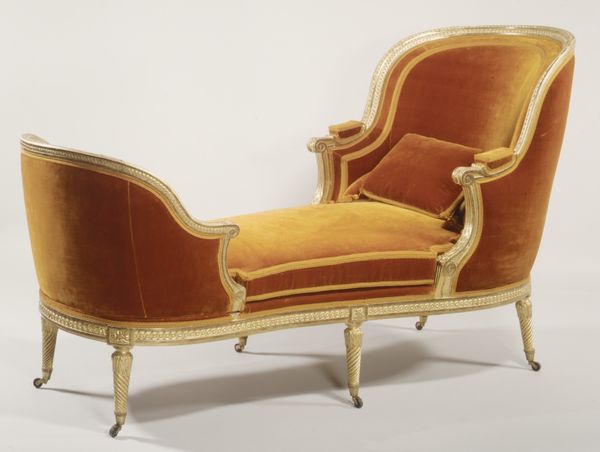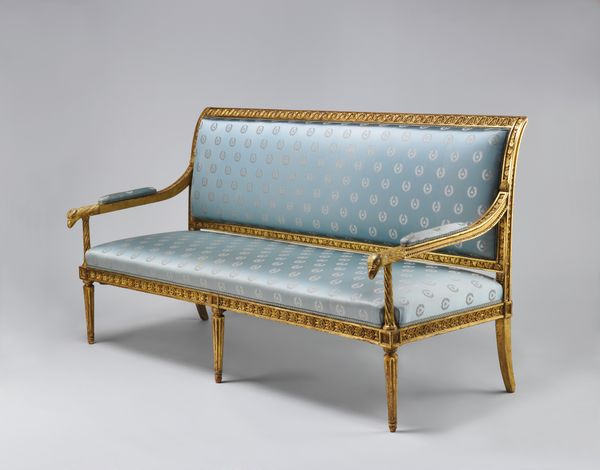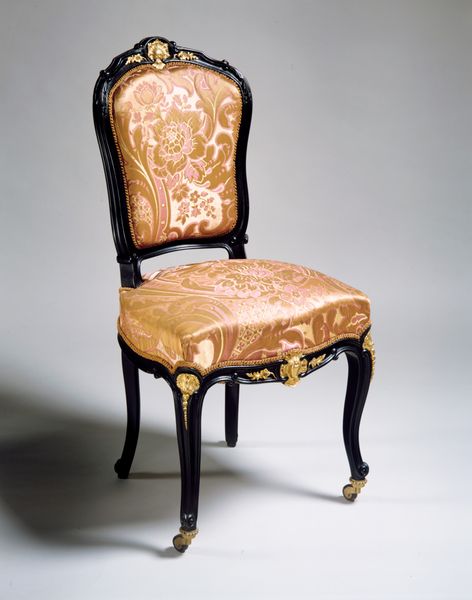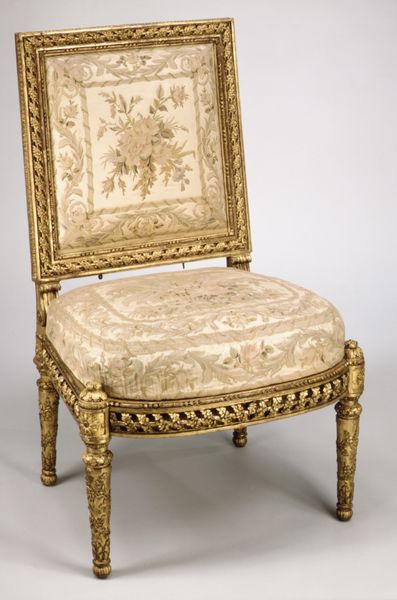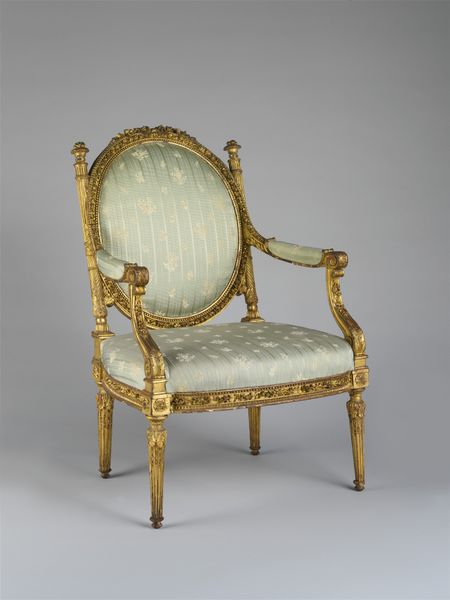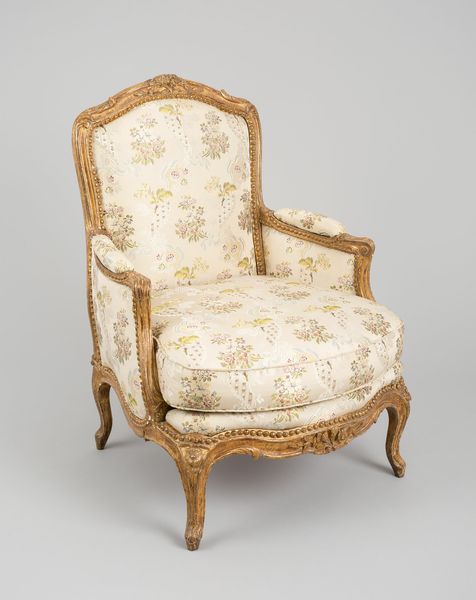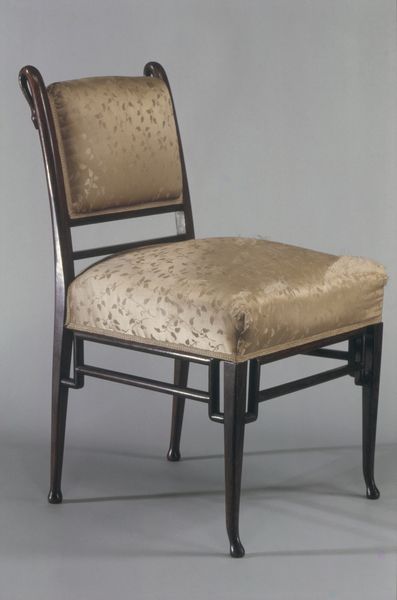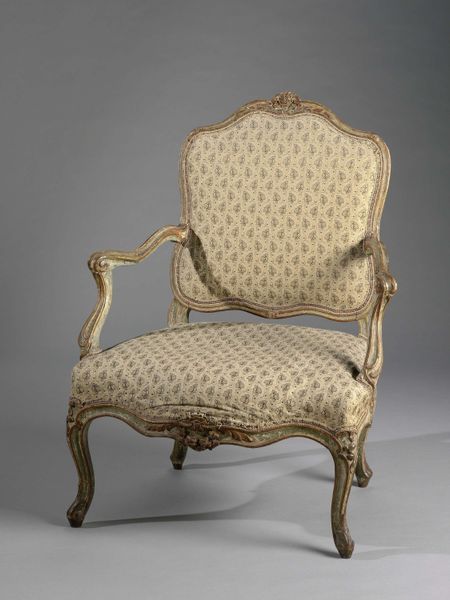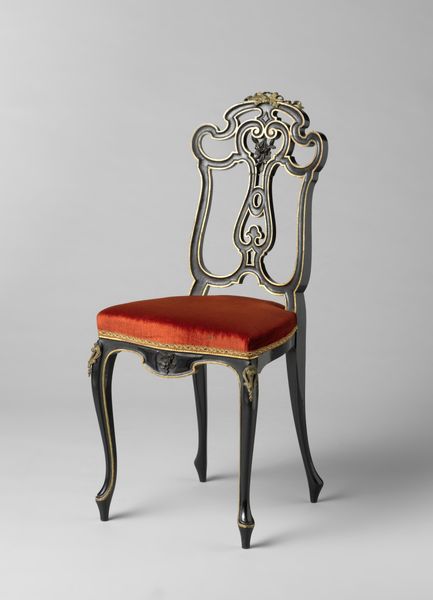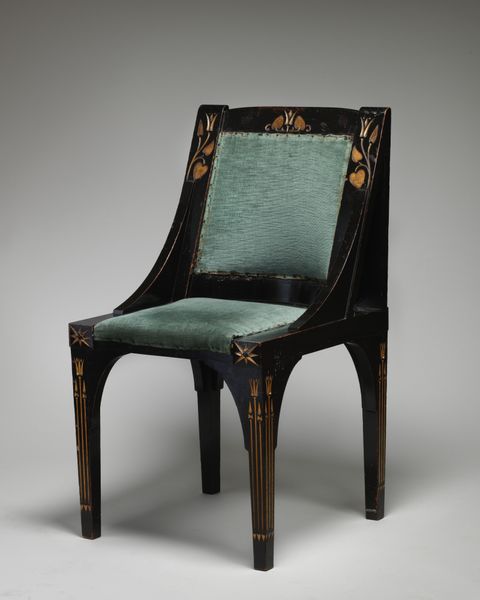
Dimensions: H. 33-5/8 x W. 23-1/2 x D. 20 in. (85.4 x 59.7 x 50.8 cm)
Copyright: Public Domain
Curator: The armchair before us, made around 1780 to 1790, comes to us from the hand of Georges Jacob. Its presence is strikingly opulent. Editor: It’s incredibly inviting, actually. The dark green velvet against the gilded wood makes me think of secluded drawing rooms, perhaps whispers of secret societies. It just breathes luxury and the quiet exercise of power. Curator: Its Baroque detailing and classical form point to the complex negotiations of power embedded within 18th-century French society, a pre-revolutionary aristocratic milieu grappling with its image. How furniture became a potent symbol, really. Editor: Right. It's impossible to ignore the role of consumption in propping up societal norms. These intricate carvings aren’t just decorative. The chair speaks volumes about gender, class, and how furniture could perform elite identities through displays of extravagance. The twist in the leg, the flourishes— Curator: Consider how artisans navigated that tension, like Jacob and others who supplied the royal court while also seeding new aesthetic trends. This armchair isn't just decorative art; it reflects the pressures of that historical moment. It demonstrates their attempts to modernize production while adhering to the Baroque tastes favored by elite circles. Editor: The armchair feels deeply complicit in upholding these outdated power dynamics. We also cannot ignore the lives implicated by a chair such as this. While this provides comfort for some, it comes as the expense of exploitation, particularly if its placement is near images of those that the aristocracy profited off. Curator: Exactly. That tension informs so much of what makes the artwork engaging, doesn't it? From the maker's place to the sitter's performative experience. Editor: Absolutely. Its creation, circulation, and, even now, the object's enshrinement in institutions reflect those power dynamics. Curator: A fascinating intersection. Editor: Definitely, it makes one reconsider what “comfort” really entails, historically speaking.
Comments
No comments
Be the first to comment and join the conversation on the ultimate creative platform.
